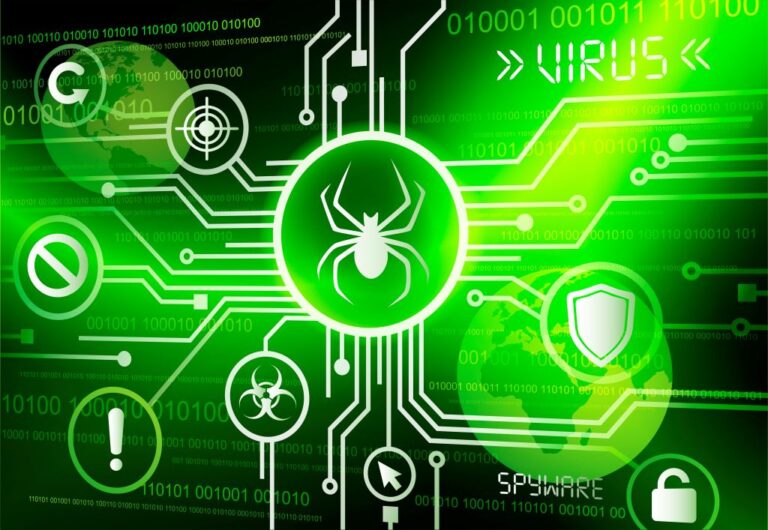The Red Team: The Attackers (But the Good Kind!)
The Red Team is like a group of undercover spies or “friendly attackers.” Their job is to think like the bad guys and try to break into the network—on purpose! But don’t worry; they’re doing it to help make the defenses stronger.
The Red Team:
🔸Tries to Break In: They use different tricks and techniques, just like real hackers, to see if they can get into the sysem.
🔸Finds Weaknesses: If there’s a weak spot, the Red Team will find it. Then they tell the Blue Team so they can fix it.
🔸Tests Security: By attacking the system (with permission), they help find ways to make it stronger.
You can think of the Red Team as the “testers” who make sure the defenses are tough. Red Team members are often called Penetration Testers or Ethical Hackers because they do hacking in an ethical, or good, way. They try to find problems before the real bad guys do!
Introduction to Cyber Red Teaming: The Attackers’ Side of Cybersecurity
Imagine cybersecurity as a castle. The defenders—the ones who watch for intruders, guard the gates, and respond to alarms—are known as the Blue Team. But to stay sharp, these defenders need realistic drills and exercises to prepare for real threats. That’s where the Red Team comes in.
The Red Team operates like a team of “ethical hackers” with a mission to simulate cyberattacks and test an organization’s defenses. They work with the Blue Team to find and fix security gaps, ensuring the castle (or network) is as secure as possible.
This guide provides a deep dive into Red Teaming, explaining what it is, the tactics used, and the tools that help these cybersecurity professionals stay ahead of real-world attackers.
What is Red Teaming?
In cybersecurity, Red Teaming is a strategy where security experts try to break into a system to assess how resilient it is against a cyberattack. But unlike actual hackers, the Red Team operates within a controlled, ethical framework. They mimic attackers by using the same tools, techniques, and processes to help organizations identify and address weaknesses in their security posture.
Here’s how it typically works:
🔸Planning: Red Teamers start with reconnaissance and planning, collecting information about the target organization, its network, and its defenses.
🔸Attack Simulation: They use simulated attacks, like phishing, malware injection, or exploitation of vulnerabilities, to penetrate the system
🔸Assessment: Once inside, the Red Team explores how far they can go, what data they can access, and which critical systems they can control.
🔸Report and Remediation: After the exercise, they provide a report outlining the discovered vulnerabilities and recommend fixes to the organization.
These assessments are often part of a larger Red Team/Blue Team exercise. Here, the Red Team conducts attacks while the Blue Team (the defenders) works to stop or detect them, creating a realistic and valuable test for the organization’s defenses.
Why is Red Teaming Important?
Red Teaming is crucial because traditional security measures—like antivirus programs, firewalls, and intrusion detection systems—are not always enough. Real-world attackers continuously find ways to bypass these defenses, so Red Teaming serves as an active way to discover these loopholes. Here’s why it matters:
🔸Identify Hidden Vulnerabilities: Red Teaming uncovers issues that routine testing might miss, like human errors or misconfigurations.
🔸Improve Incident Response: By engaging with simulated attacks, the Blue Team gains practice in responding to real-world threats.
🔸Enhance Security Policies: Red Team findings often lead to improvements in security policies, training, and technology implementations.
🔸Prevent Costly Breaches: By identifying weaknesses, Red Teaming can save organizations from costly breaches and loss of sensitive data.
Key Tactics and Techniques Used in Red Teaming
Red Teamers use a variety of tactics, techniques, and procedures (TTPs) to simulate realistic attacks. Here are some of the primary methods they use:
Social Engineering:
🔸Red Teamers use social engineering to exploit human psychology. Techniques include phishing emails, where they send deceptive emails to employees to get them to reveal sensitive information or click on malicious links.
🔸They might use pretexting, pretending to be a trustworthy figure (like IT support) to gain access to accounts or sensitive information.
Reconnaissance:
🔸Gathering information about the target is essential. Red Teamers conduct open-source intelligence (OSINT) by exploring publicly available information on social media, company websites, and more.
🔸They may use tools like Maltego or Recon-ng to map out employees, technologies, and potential vulnerabilities.
Exploitation of Vulnerabilities:
🔸Once they know the target, Red Teamers use tools to discover vulnerabilities. This can include scanning for outdated software or poorly configured systems.
🔸Tools like Nmap and Metasploit are popular for scanning networks and launching targeted exploits.
Privilege Escalation:
🔸Gaining initial access is often only the beginning. Red Teamers look for ways to escalate privileges—moving from a basic user role to an admin role. This step is vital for gaining deeper access to the organization’s critical systems and data.
Lateral Movement:
🔸Once inside the network, Red Teamers move laterally across systems, hopping from one machine to another to gain access to the organization’s core infrastructure.
🔸Techniques include exploiting weak passwords, poor network segmentation, or vulnerabilities in file-sharing systems.
Persistence:
🔸If the Red Team plans a longer attack simulation, they establish persistence, leaving “backdoors” or hidden accounts that allow them to return to the system even if the Blue Team detects some of their initial access points.
Tools Commonly Used by Red Teams
To make attacks realistic, Red Teamers use a variety of cybersecurity tools. Here are some of the top tools in Red Team arsenals:
Metasploit Framework:
🔸Metasploit is an open-source framework for developing and executing exploit code. It has a massive library of exploits, which makes it ideal for simulating real-world attacks.
🔸It allows Red Teamers to automate attacks, test defenses, and gain control of targeted systems.
Cobalt Strike:
🔸Cobalt Strike is a commercial tool that enables Red Teamers to create payloads, communicate covertly, and manage compromised machines.
🔸It’s widely used for emulating adversary behavior, with features for lateral movement, persistence, and command-and-control operations.
Nmap:
🔸Nmap is a network discovery tool used to scan and map network topologies. Red Teamers use Nmap to identify open ports, running services, and potential vulnerabilities on network devices.
BloodHound:
🔸BloodHound uses graph theory to reveal hidden relationships within Active Directory environments, showing Red Teamers potential attack paths.
🔸This tool is invaluable for privilege escalation and lateral movement within networks managed by Microsoft Active Directory.
Empire:
🔸Empire is a post-exploitation framework that allows Red Teamers to conduct actions after they’ve breached a system. It supports privilege escalation, lateral movement, and data exfiltration.
Wireshark:
🔸A network protocol analyzer, Wireshark helps Red Teamers monitor and capture live network traffic. It’s especially useful for identifying unencrypted data and misconfigured protocols.
Red Teaming vs. Penetration Testing
Red Teaming is sometimes confused with penetration testing (pen testing), but they have distinct purposes:
🔸Penetration Testing: Typically shorter in duration, focused on specific vulnerabilities or systems, and aims to find as many issues as possible in a set period.
🔸Red Teaming: Takes a holistic, strategic approach, emulating realistic cyberattacks and testing the entire organization’s security posture, including how the Blue Team responds.
In essence, Red Teaming simulates a full-scale adversary, while penetration testing focuses more narrowly on identifying security flaws.
The Role of Red Teams in Improving Cybersecurity
Red Teams play a crucial role in enhancing an organization’s security:
🔸Training and Preparation: Red Team exercises give the Blue Team (the defenders) hands-on experience in detecting and stopping real threats.
🔸Strengthening Security Controls: By discovering weaknesses in firewalls, intrusion detection systems, and endpoint security, Red Team assessments drive improvements across the security stack.
🔸Reducing Risk: Organizations can reduce their risk profile by addressing the vulnerabilities Red Teams discover, making it harder for actual attackers to succeed.
🔸Developing Response Strategies: Red Team exercises help organizations develop better response strategies, enabling faster and more effective responses when real attacks occur.
Red Teaming is an essential practice in modern cybersecurity, providing organizations with a realistic test of their defenses. By mimicking the tactics and tools of real-world adversaries, Red Teams help organizations stay prepared, improve defenses, and cultivate a proactive security posture. For those new to cybersecurity, understanding Red Teaming is a valuable step toward appreciating the complex, strategic side of cybersecurity and the importance of constant vigilance and improvement.








